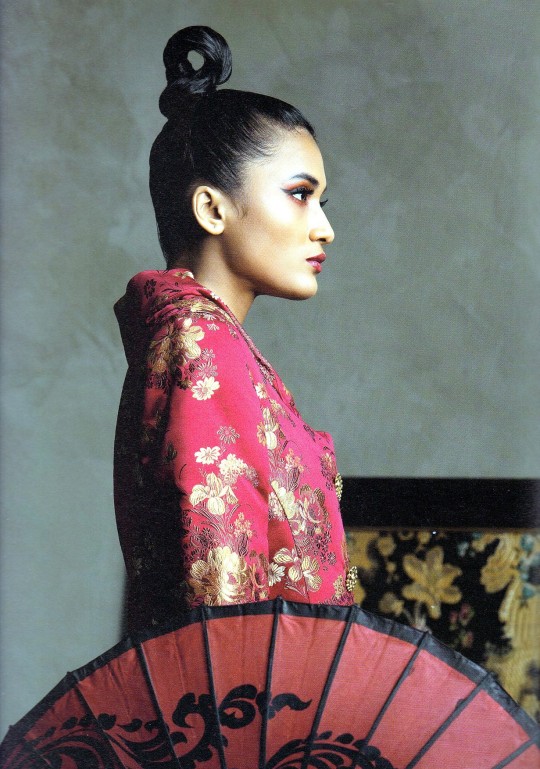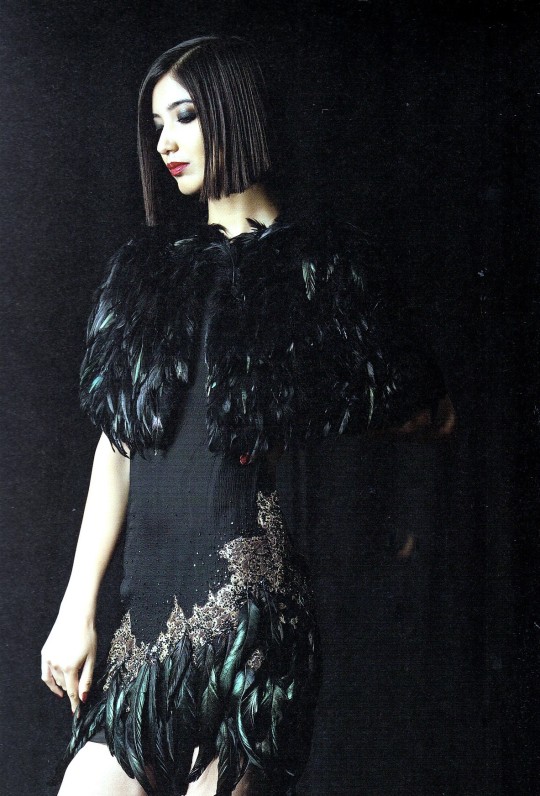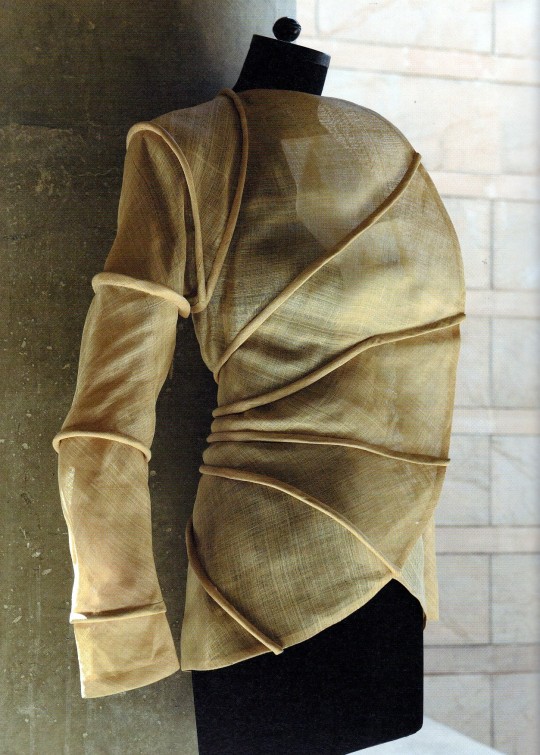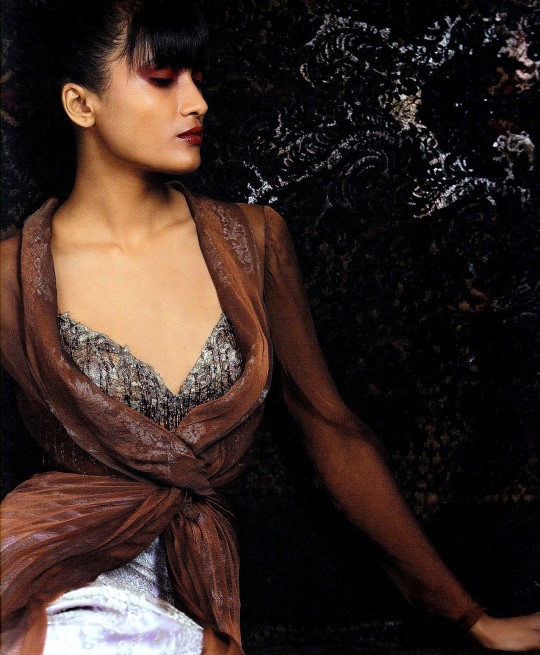#Didier Lecoanet
Explore tagged Tumblr posts
Text












Lecoanet Hemant
Sylvie Marot
Ed.Snoeck, Ghent 2022, 304 pages, 26x30,5cm, ISBN 97894616852
euro 63,00
Lecoanet Hemant (founded in 1981) is a fashion label, founded by Didier Lecoanet and Hemant Sagar. The label initially was based in Rue du Faubourg Saint-Honoré, Paris and focussed only on haute couture designs. However, the label has transitioned the focus to ready-to-wear and has moved their base to Gurugram, India.
Hemant and Lecoanet met in Paris, France, at the Ecole de la Chambre Syndicale de la Couture Parisienne. Both of them were learning Haute Couture at that time and decided to launch some
05/05/24
13 notes
·
View notes
Photo

Feedback of a client! 'It is a #pleasure to #work (out) with #Jasmin and I would #recommend her #services to anybody who is looking for #great #results and finds it #tough to go to a gym all alone for an actual result (versus a #dream that will not come true) - Hemant Sagar and Didier Lecoanet Read the full success story: Success Stories of Jasmin Waldmann
0 notes
Text
New Post has been published on Titos London
#Blog New Post has been published on http://www.titoslondon.in/from-paris-to-gurgaon/
From Paris to Gurgaon
Hemant Sagar (left) with Didier Lecoanet; their designs shown at Bikaner House
IN THE 17 years since they moved their headquarters from Paris to Infocity, Gurgaon, Didier Lecoanet and Hemant Sagar of the eponymous Indo-French fashion label Lecoanet Hemant have gone from being members of the Parisian Haute Couture Syndicate and dressing Texan millionaires, Saudi princesses and French aristocrats, to building a state-of-the-art factory where they manufacture their couture and luxury ready-to-wear lines and aim to “transition from artisanal to semi-industrial”. All set to complete 36 years in the fashion industry, the duo hosted a retrospective exhibition “Paris-New Delhi, From Haute Couture to the Technologies of Elegance”, at Bikaner House, Delhi, which ends today. On display at the exhibition were nearly 40 creations; half made in Paris (1984-2000) and the other half at their Gurgaon atelier (2000-2017). Sagar spoke to us about their journey and the need for a “train conductor” in fashion. Edited excerpts:
Why did you do this exhibition and not stick to a traditional fashion show to celebrate your landmark moment?
I’m actually protesting that in India we keep doing everything in a traditional way only to honour the past. In the land of textiles and colours, it’s difficult to find more than six metres — that is, a sari — of a specific material. That the young designers do not have a feed to do funky stuff, and officially, they don’t want it anyway because grandpa doesn’t want it. This is the reality of our country. I too honour my grandparents, but I also honour my 2017-make mobile phone. One doesn’t have to exclude the other.
There isn’t enough emphasis on modernism. From Paris’s Faubourg Saint-Honore to Infocity, Gurgaon, how has your fashion changed and what have been the highlights of your journey?
It’s exactly the same thing, except the medium has changed. In Paris, we were the most Indian of Parisians and in India we are the most Parisian of Indians. The journey hasn’t had that many highlights because I’ve been constructing all the way. Fashion, the way I see it, is like being a train conductor and sticking your head out of the window to look in the front whether the rails are right, and look at the back to check if your wagons are all there. In India, this doesn’t apply because everyone is sitting in First Class already. Resultantly, there is no conductor and we���re not quite sure where we’re going with our fashion. So, I’ve decided to do it by myself.
Your move to India “was aimed at transitioning from artisanal to semi-industrial”. Please comment.
The artisan who functions from his home doesn’t have to report to anybody, not even conform to industrial norms. But I believe that the word ‘industry’ means to be industrious, and to work together. We are not alone in the world and neither is the artisan. The person whom the artisan sells to unfortunately bargains him down. And we call it honouring the artisans. The artisan needs to leave the 19th century and enter the 21st. And this is what I’m reinforcing with organised creation in a semi-industrial manner.
Your exhibit highlights the ‘technologies of elegance’. Please elaborate.
I’m always thinking about how to reuse what I’ve learnt in made-to-measure in a non made-to-measure scenario. This is difficult because if you’re producing luxury in a certain organised manner, you have to follow principles of mass production without it being mass. We’re talking of making seven pieces but up to industrial norms, something that can be sold anywhere in the world, not like making one garment for maasi and one for chaachi.
You’re great believers in collaborating with artisans.
We’ve worked with the Gobelin weavers in Aubusson, France, where we had a piece of canvas woven with a motif which is actually the picture of a landscape. We have worked with Master Tatsumura, Kyoto’s mythical brocade weaver, and the porcelain painters of the Royal Prussian Porcelain painters of Berlin, who painted a German castle on tulle for us. Of course, a lot of these pieces were one-offs and it would be difficult to show them here.
What’s next on the cards for Lecoanet Hemant?
We’re working on our next online collection for GENES Lecoanet Hemant. We’re going to further market Ayurgenic, our ayurvedic line, a unique treatment we discovered in Kerala, where the fabric is infused with ayurvedic oils that enhance your metabolism.
For all the latest Lifestyle News, download Indian Express App now
0 notes
Photo










Lecoanet Hemant
Sylvie Marot
préfaces de Alexandre Samson et Maryline Bellieud-Vigouroux
Snoeck, Gand 2022, 304 pages,30,5 x 26,4, relié, ISBN 978-94-6161-685-2
euro 55,00
email if you want to buy :[email protected]
Ce livre, la première monographie consacrée à Lecoanet Hemant, célèbre les quarante ans de la maison de couture fondée par le français Didier Lecoanet et l'indo-germanique Hemant Sagar. Entre explosion de couleurs et espièglerie, Lecoanet Hemant va contribuer au renouveau de la haute couture dans les années 1980, discipline en déclin depuis les années 1960 face à la modernité écrasante du prêt-à-porter. Leur créativité oscille entre deux cultures, entre l'Orient et l'Occident. Leur art du drapé imposant une vision du sari couture comme leur recherche de matières singulières singularisent leur démarche. Entre 1984 et 2000, Lecoanet Hemant réalise trente-trois collections haute couture qui sont autant d'odes à l'ailleurs. En 1994, le Dé d'Or distingue leur « recherche créative ». En 2000, Didier Lecoanet et Hemant Sagar quittent Paris pour s'installer à New Delhi, abandonnant le sur-mesure de la haute couture pour la production sérielle du prêt-à-porter. Aujourd'hui, riche de cet héritage hybride, la marque Genes Lecoanet Hemant affirme un style élégant. Leur histoire se raconte en deux temps : après avoir incarné les « Orientalistes » à Paris pendant deux décennies, ces deux créateurs deviennent les « Parisiens » de l'Inde les deux décennies suivantes. Les créations couture de Lecoanet Hemant sont présentes dans de grands musées de mode ( Palais Galliera, Paris et musée de la Mode à Marseille. L'auteure, Sylvie Marot, compose en treize chapitre le texte Tête-à-tête. Elle revient sur la création de cette Maison qui se lance à contre-courant en haute couture, aussi frondeuse que naïve, (Atelier, Symbiose, Mannequins, Couture...) et analyse le style inédit qui ce duo qui se défend de tout maître (Vortex, Calyx, Chromatique, Arabesque...). Le livre fait la part belle aux photographies-signatures. De Dominique Issermann à Patrick Demarchelier en passant par David Seidner, Patrick Trautwein, Arthur Elgort, Jeff Dunas, Jean-Daniel Lorieux..., ces images, essentiellement parues dans la presse mode de l'époque, du Vogue Paris à Harper's Bazaar en passant par L'Officiel ou Joyce, nourrissent cette part de rêve. Les croquis originaux prouvent combien le geste est précis quant aux intentions stylistiques défiant la pesanteur et l'austérité au profit du faste, des cols corolles et des drapés. En fin, le livre recense l'intégralité des collections haute couture dont les thèmes évoquent leur goût pour le voyage : Mousson, Un hiver Moghol, Ch'an, La Route de la soie, Retour d'Égypte, Sur les traces de Gengis Khan...
27/11/22
orders to: [email protected]
ordini a: [email protected]
twitter: @fashionbooksmi
instagram: fashionbooksmilano, designbooksmilano tumblr: fashionbooksmilano, designbooksmilano
#Lecoanet Hemant#Hemant Sagar#Didier Lecoanet#maison couture#Vortex#Calyx#chromatique#arabesque#David Seidner#Arthur Elgort#Jeff Dunas#fashion books#fashionbooksmilano
16 notes
·
View notes
Photo










Les Orientalistes de la Haute Couture Lecoanet Hemant
Shazia Boucher, Renuka George, Sylvie Marot, Aurélie Samuel
Coédition Cité de la dentelle et de la mode et Snoeck éditions, Calais / Gand 2022, 160 pages, relié, 25,2 X 31,7 cm, ISBN 9789461615923
euro 36,00
email if you want to buy :[email protected]
Première rétrospective consacrée à la maison Lecoanet Hemant du 18 juin au 31 décembre 2022 , l’exposition Les Orientalistes de la Haute Couture s’annonce comme un voyage au coeur d’une mode chatoyante et raffinée cultivant l’art du métissage, un savant mélange des cultures française et indienne. La maison Lecoanet Hemant naît en 1979 de l’association de Didier Lecoanet, né en 1955, qui a fait ses premières armes chez Lanvin, et de Hemant Sagar, né à New Dehli en 1957. Leur fructueuse collaboration les amène à défiler de 1984 à 2000 dans le cercle fermé de la haute couture parisienne. Depuis, la maison s’est orientée vers le prêt-à-porter cosmopolite conçu en Inde. Le style Lecoanet Hemant, c’est une allure poétique qui traverse le temps et les continents. Une vision de l’Orient qui s’exprime à travers les modulations du drapé et une certaine idée du coupé-cousu à la française. Véritables marques de fabrique de la maison, le sari indien décliné à l’envi et les références à la nature sous forme d’imprimés, de tissés et de broderies aux matières originales, comme la ramie ou encore la fibre d’ananas. Spectacle éblouissant en tous points, les quelques quatre-vingt silhouettes évoquent l’héritage culturel d’une route de la soie imaginaire. L’exposition se déploie dans une élégante galerie scandée de grandes vitrines où de somptueuses tenues sont mises en scène aux côtés de mobilier et objets décoratifs tout droit sortis d’un film d’Agatha Christie. Les robes du soir brodées côtoient les châles à franges dorées non loin d’opulents manteaux damassés et autres tailleurs aux savants drapés… Une mode réjouissante digne des contes des « Mille et Une Nuits ».
26/11/22
orders to: [email protected]
ordini a: [email protected]
twitter: @fashionbooksmi
instagram: fashionbooksmilano, designbooksmilano tumblr: fashionbooksmilano, designbooksmilano
#Lecoanet hemant#orientalistes Haute Couture#fashion exhibition catalogie#Citè dentelle et mode Calais 2022#rétrospective#métissage#orient#"Mille et Une Nuits#fashion books#fashionbooksmilano
8 notes
·
View notes